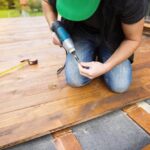What would you do when you realize that your kitchen tap does not close well or is leaking? Many people will call a professional plumber to fix the problem. The good news is that you can handle some of the plumbing maintenance by yourself.
Some of the plumbing problems are easy to fix, and you don’t need to call a plumber. A plumber will charge you a lot of money to fix a small problem. Some will even ask you to pay transportation fees. What are the plumbing maintenance services you can handle?
Plumbing Maintenance Practices You Can Handle Alone
It would help a lot if you learned some plumbing basics, including fixing a leaking tap, a broken pipe, or a clogged toilet. If the tasks seem challenging, companies like Plumb-Tech can help you do them. They will walk you through that journey to the end.
Plumbing Items You Should Have
Before getting down to fix your leaking tap or clogged toilet, you need to have a toolbox with all the necessary plumbing tools. Consider the following options.
- Adjustable wrench
- Two plungers- for the toilet and kitchen sink
- Pliers
- Plumbing tape
- Utility knife
- Screwdriver
- Caulking gun
Now let us look at the plumbing maintenance practices you can fix on your own.
1. Leaking Taps

Before you fix a leaking tap, you need to know that there are different types of faucets. So, which one is yours? Also, get to know the parts of the tap and the role each plays.
That will help you identify your problem’s cause, and it will be easy to fix it. If you are stuck, YouTube videos can help.
2. Clogged Drainage
Do you know what causes clogs in drainage? Whether it’s the kitchen or the toilet drainage, you should be careful with what you let go through them.
Food remains should be thrown in the dustbin. Do not flush wet wipes, hair, and other insoluble materials down the bathroom drainage.
Identify what is causing your drainage to be slow, as some cases should get handled by a professional plumber. If the problem is debris caught up in the draining pipe, you can use a sink plunger to suck it out.
You can also keep your drainage clean by using natural solvents like baking soda and vinegar. Consider rinsing it with hot water to unblock the clog completely.
3. Installing a Toilet

You don’t have to be an expert to put your toilet up to use. A dual flush system will be ideal for your new toilet. Ensure that you read and follow the manufacturers’ instructions well. If you’re stuck, search for guidelines on the internet.
4. Putting Back Kitchen Sink Sprayer
Since there are many types of sprayers, it’s essential to know the kind of your sprayer. Unlike new sink sprayers, the old ones have a detachable hose.
You can replace the sprayer alone if the hose is not damaged. But if the hose gets distorted, you’ll need a new hose and a new sprayer nozzle.
All these parts are available in hardware stores. Ensure you follow the installation guidelines issued by the manufacturer.
5. Fitting a Kitchen or Bathroom Faucet
New parts come with instructions, and you can ask the seller at the hardware to guide you. If you are stuck, follow YouTube tutorials on faucet installation. You can also give your plumber a call and ask for help.
6. Fixing Toilet Leaks

This problem comes in when the seal around the valve seat is faulty. After some time, dirt forms around the valve seat and flapper. That prevents the flapper from sealing correctly, and it could be the reason your toilet is leaking.
Check well for a reason behind the leakage because damaged tank stoppers and handles could cause leaking.
7. Caulking Bathtubs and Showers
There are many types of caulks, and you need to know the right one. Otherwise, you will keep repeating the same work over and over.
You can use caulks for different purposes, including filling cracks in drywall and sealing off plumbing appliances.
Before applying the caulk, read instructions on the tin’s label to make sure you go home with the right thing. Also, quality matters when it comes to caulking guns. So, choose a high-quality caulking gun that will last longer.
8. Changing Showerheads

Upgrading your showerhead will help you pay less water bills. Consider installing slow-flow showerheads to avoid wasting water. Install the showerhead using guidelines given by the manufacturer. After installation, open the shower to ensure it works well.
9. Repairing Garbage Disposals
It might seem like a challenging task, but it’s one of the easiest DIYs. New garbage disposals come with hex wrenches attached to them, so you don’t need extra tools.
The good news is, the manufacturers usually include instructions for repairing clogged garbage. So, ensure you read them carefully and know which part belongs to where.
If you don’t trust your memory, you better take a picture of the garbage disposal before undoing it. Make sure you switch off the power at the source before touching anything.
10. Sump Pump Repair
Sump pumps are not popular, and this one needs extra care when repairing. Since you will have to do some electrical work, it is wise to get a plumber to do it for you.
It would also be best to make inquiries with the building inspectors before changing your sump pump. You should at least have some electrical skills.
Your sump sit may get blocked by debris, and you should know how to clean it before starting the process.
Final Words
Once the first installation is complete, doing repairs is usually easy and does not need an expert. Just a little knowledge and you are good to go. Ensure you turn off the main electricity switches and water valves to avoid accidents during plumbing maintenance.






